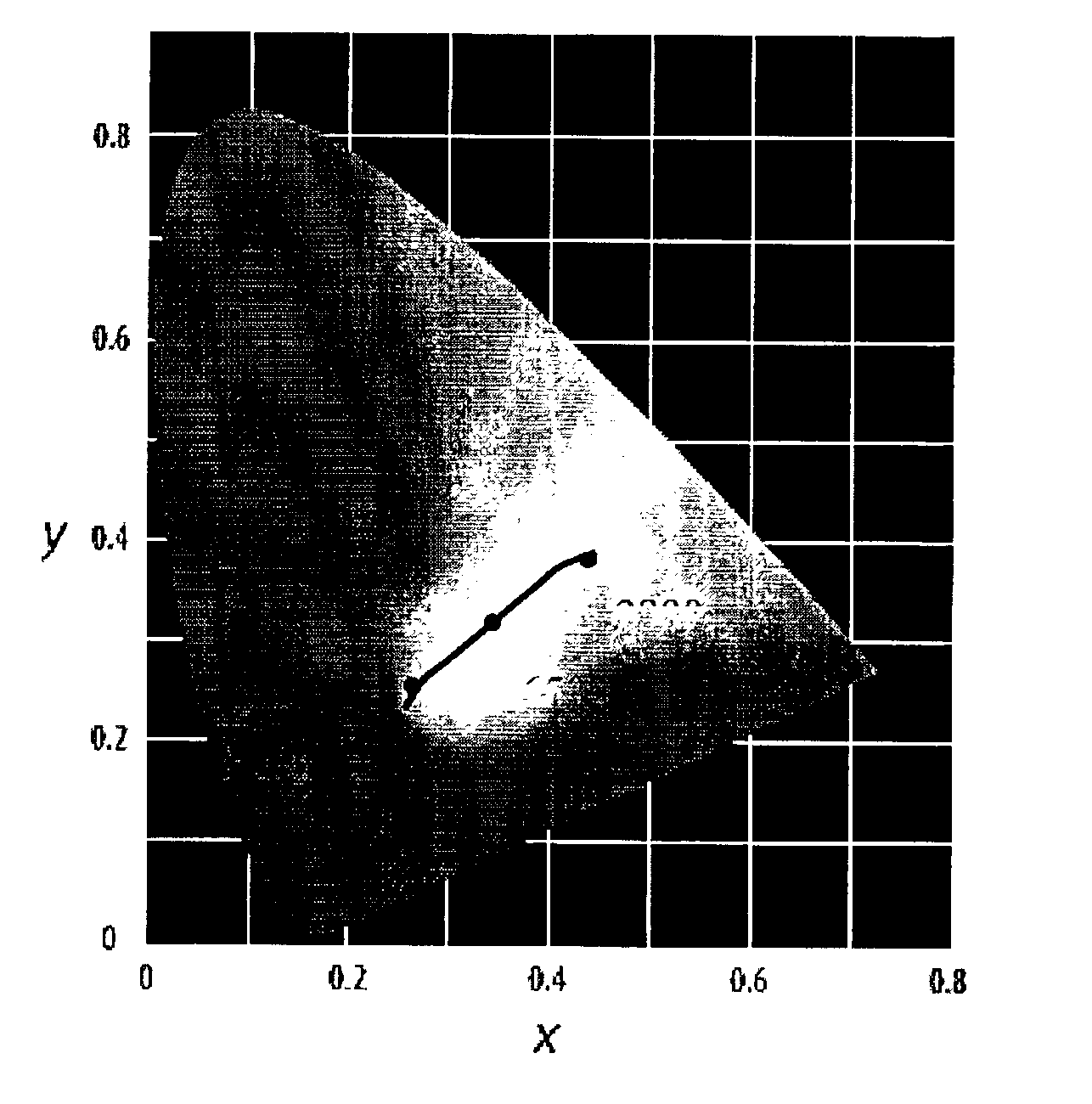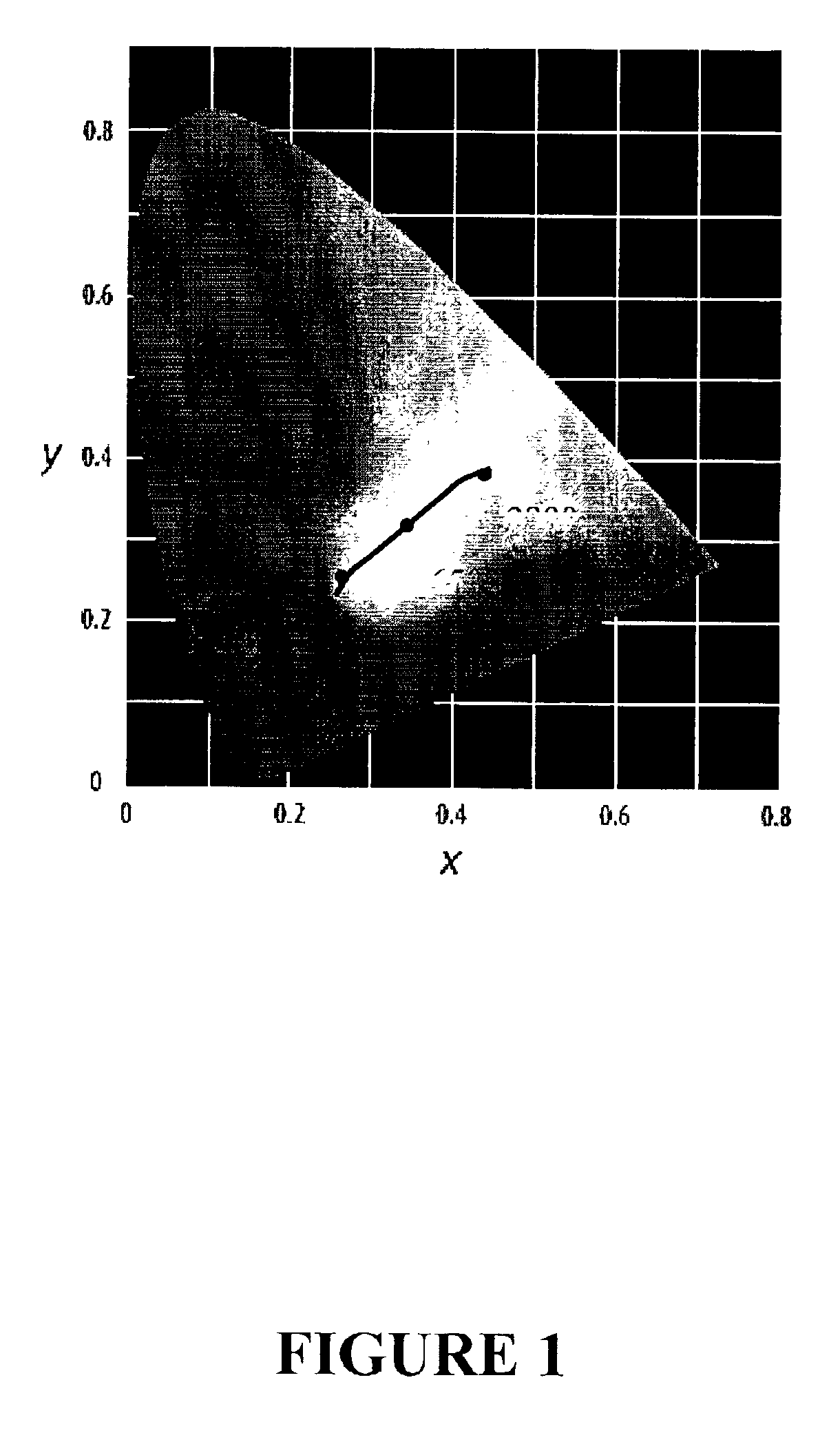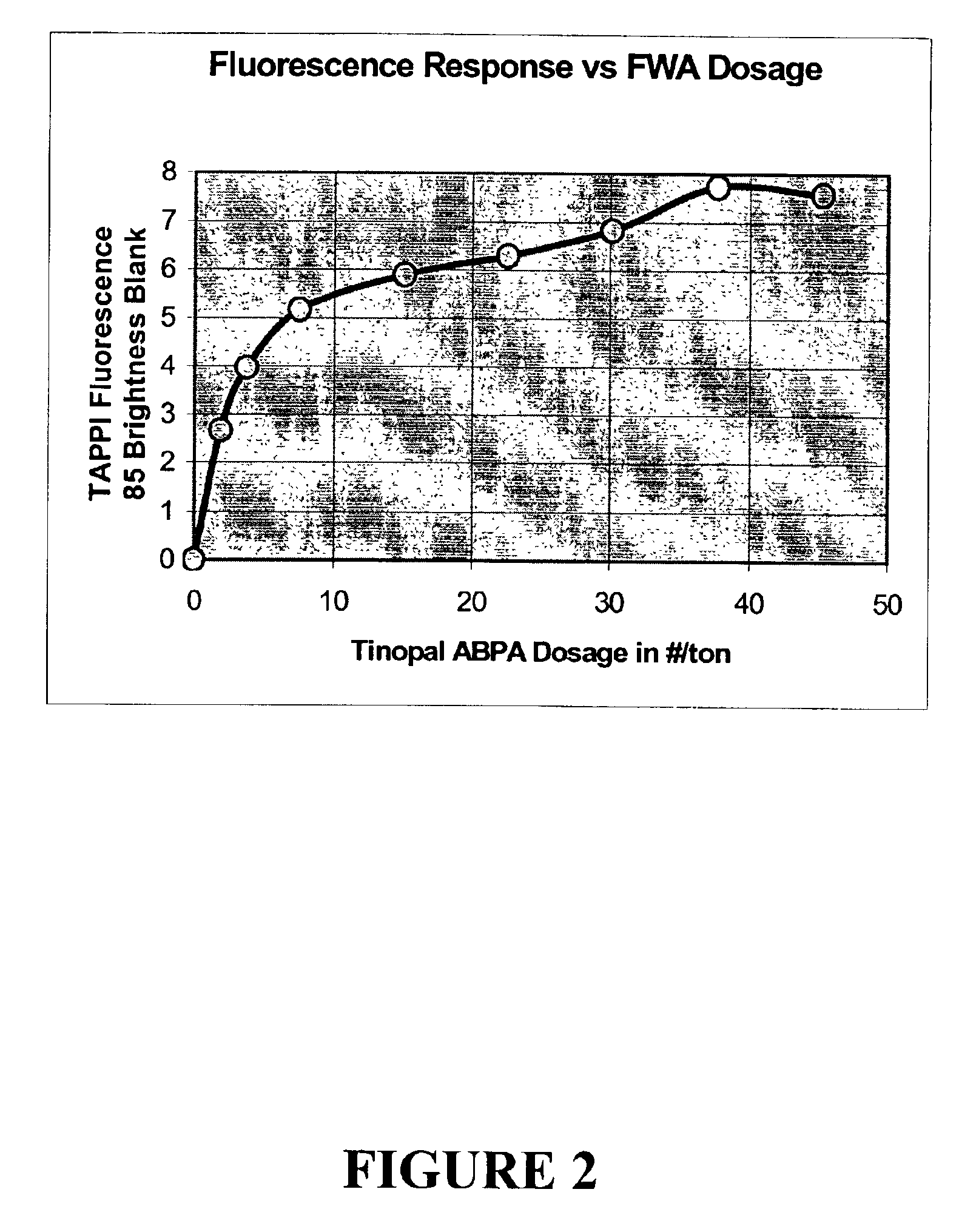Whitened fluff pulp
a technology of whitened fluff and pulp, which is applied in the field of whitened fluff pulp, can solve the problems of high price of bleaching, undesirable yellow-white product, and inability to achieve the most efficient method of boosting product whiteness
- Summary
- Abstract
- Description
- Claims
- Application Information
AI Technical Summary
Benefits of technology
Problems solved by technology
Method used
Image
Examples
example 1
The Preparation of Handsheets Including Whitened Pulp
[0048]In this example, the preparation of handsheets that include whitened pulp is described. The characteristics of the whitening materials are provided.
[0049]Handsheets / pads were made in the following manner. Four gram handsheets were made from the “regular” pulps (82, 96, 91 brightness) and 12 gram pads were made from the crosslinked pulp (citric acid crosslinked pulp). The amounts and order of chemical addition was as follows:[0050](1) Pulp;[0051](2) De-ionized water, 90 mls;[0052](3) Water hardness, 10 mls (takes water hardness to 100 ppm);[0053](4) PCC, 200 lbs. / ton (10% nominal filler loading);[0054](5) Dye / pigment / FWA;[0055](6) Alum (for tinting pigment only), 10 lbs. / ton; and[0056](7) Retention aid (in the sheet mold), 0.5 lbs. / ton.
[0057]For the crosslinked pulp pad, the crosslinked pulp was added to blender before PCC.
[0058]The PCC was Albacar HO (specification states dry brightness of 97).
[0059]While handsheets were mad...
example 2
The Preparation of Handsheets Including Whitened Pulp: Stock Pulp Brightness 82
[0065]In this example, the preparation of handsheets that include whitened pulp is described. The stock pulp for these handsheets was fluff pulp having a brightness of 82 (Control 82). The prescriptions (i.e., whitening materials and methods) are designated as “filler-only”, “blue-dye-only”, “FWA-only”, and “combined”. The optical results (e.g., brightness and whiteness) for representative handsheets including whitened pulp are summarized in Table 1 in FIG. 3. Regarding Table 1, TAPPI Method 452 Brightness (Br) was measured on a Technidyne S4 Brightimeter; CIE Whiteness (Wh) and CIELAB D65 / 10 (CIE Illuminant D65 and 10 Degree Standard Observer) L*a*b* parameters were measured with a DataColor Spectraflash 500. TAPPI Brightness and CIE Whiteness include fluorescence components, if present, based on an ultra-violet content level equivalent to that typically generated by a quartz-tungsten-halogen light sourc...
example 3
The Preparation of Handsheets Including Whitened Pulp: Stock Pulp Brightness 86
[0077]In this example, the preparation of handsheets that include whitened pulp is described. The stock pulp for these handsheets was fluff pulp having a brightness of 86 (Control 86). The prescriptions (i.e., whitening materials and methods) are designated as “filler-only”, “blue-dye-only”, “FWA-only”, and “combined”. The optical results (e.g., brightness and whiteness) for representative handsheets including whitened pulp are summarized in Table 2 in FIG. 5. Regarding Table 2, TAPPI Method 452 Brightness (Br) was measured on a Technidyne S4 Brightimeter; CIE Whiteness (Wh) and CIELAB D65 / 10 L*a*b* parameters were measured with a DataColor Spectraflash 500. TAPPI Brightness and CIE Whiteness include fluorescence components, if present, based on an ultra-violet content level equivalent to that typically generated by a quartz-tungsten-halogen light source. A graph of whiteness as a function of prescription...
PUM
| Property | Measurement | Unit |
|---|---|---|
| Angle | aaaaa | aaaaa |
| Dimensionless property | aaaaa | aaaaa |
| Dimensionless property | aaaaa | aaaaa |
Abstract
Description
Claims
Application Information
 Login to View More
Login to View More - R&D
- Intellectual Property
- Life Sciences
- Materials
- Tech Scout
- Unparalleled Data Quality
- Higher Quality Content
- 60% Fewer Hallucinations
Browse by: Latest US Patents, China's latest patents, Technical Efficacy Thesaurus, Application Domain, Technology Topic, Popular Technical Reports.
© 2025 PatSnap. All rights reserved.Legal|Privacy policy|Modern Slavery Act Transparency Statement|Sitemap|About US| Contact US: help@patsnap.com



